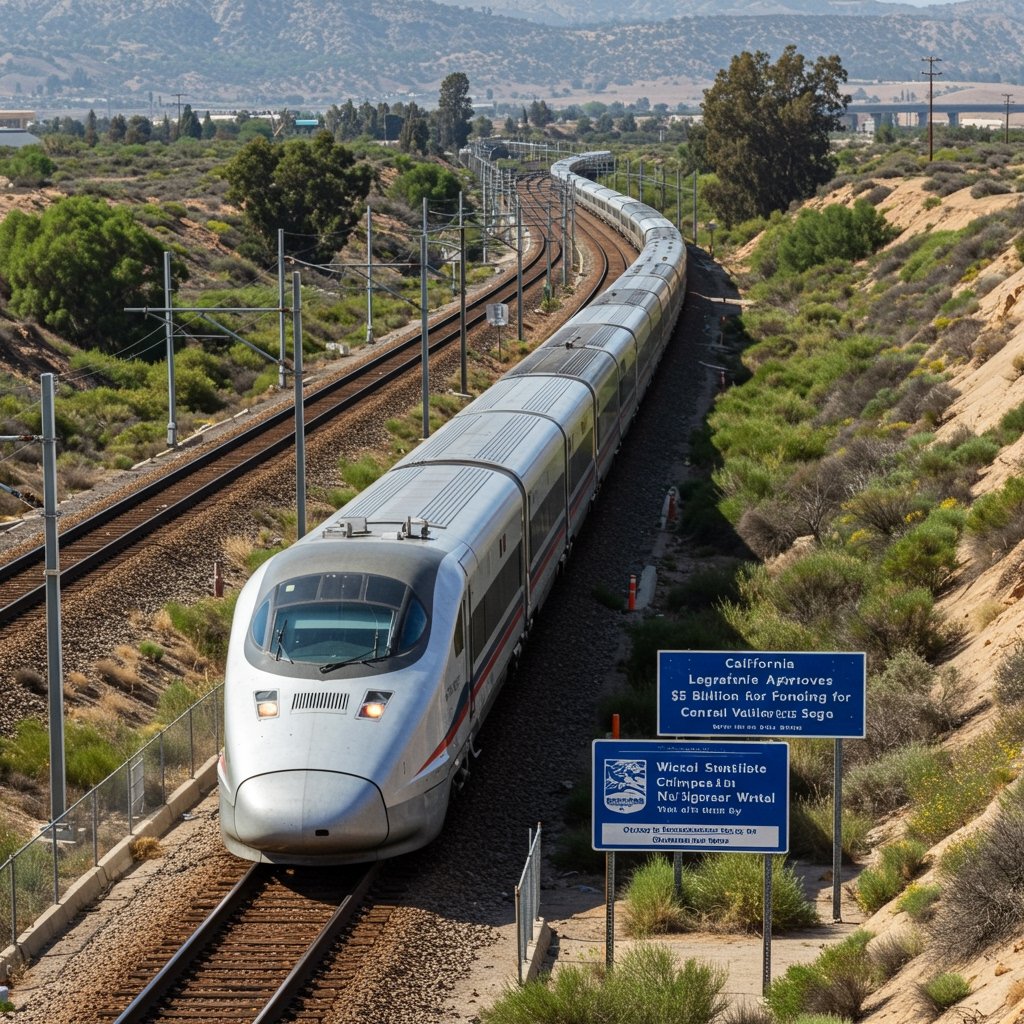California Legislature Approves Crucial $5 Billion Funding for High-Speed Rail’s Central Valley Segment
Sacramento, CA – On June 8, 2025, the California State Legislature took a significant step forward for the state’s ambitious high-speed rail project, granting final approval to Senate Bill 350. This landmark legislation allocates a substantial $5 billion in new funding specifically earmarked for the California High-Speed Rail program. The passage of SB 350 represents a critical financial injection intended to accelerate construction progress on one of the project’s most vital components.
Redirecting Funds to a Critical Link
The $5 billion appropriated through Senate Bill 350 is not designated for the entire sprawling project but is strategically directed towards a specific and crucial segment: the 171-mile stretch intended to connect the cities of Bakersfield and Palmdale within the Central Valley. This particular section has been identified by project planners and state officials as paramount for establishing the initial operational phase of the high-speed rail system. Currently, significant construction activity is concentrated in the Central Valley, and this funding is aimed at overcoming financial hurdles and maintaining momentum on this foundational segment. The completion of the Bakersfield-Palmdale link is seen as essential before connecting to lines extending towards the San Francisco Bay Area in the north and Los Angeles in the south.
A Decades-Long Vision Takes Shape
The California High-Speed Rail project, first approved by voters in 2008, envisions a high-speed rail line that will eventually connect the San Francisco Bay Area to the Los Angeles Basin, with trains capable of exceeding 200 miles per hour. The goal is to provide a faster, more sustainable alternative to air and automobile travel between the state’s major metropolitan areas. The project has faced numerous challenges over the years, including escalating costs, delays, political opposition, and complex engineering and environmental hurdles. Funding has historically come from a mix of state bond issues, federal grants, and state cap-and-trade auction proceeds. The approval of SB 350 adds another significant layer of state investment, underscoring the legislature’s continued commitment to realizing at least a functional portion of the network.
Political Momentum and Support
Governor Gavin Newsom was a strong advocate for the funding bill, hailing its passage as a “transformative investment” for California’s transportation future. Supporters in the legislature echoed this sentiment, arguing that investing in high-speed rail is crucial for the state’s long-term economic vitality, environmental goals (by reducing reliance on fossil fuels and alleviating congestion), and population growth. Proponents highlight the job creation spurred by construction activities and the potential for regional economic development along the route, particularly in the Central Valley, which stands to benefit significantly from enhanced connectivity. They argue that despite past difficulties, abandoning the project is not a viable option, and targeted investments like the one in SB 350 are necessary to demonstrate progress and build confidence in the project’s ultimate success.
Persistent Criticisms and Challenges Remain
Despite the legislative victory for proponents, the California High-Speed Rail project continues to face significant criticism. Opponents, including various watchdog groups and some lawmakers, continue to voice serious concerns over the project’s persistent budget and timeline challenges. The estimated total cost of the full Phase 1 system (San Francisco to Anaheim) has ballooned considerably since initial projections, and the completion date has been repeatedly pushed back. Critics argue that the cost per mile is exorbitant and question the ridership projections used to justify the project’s economic viability. There are also ongoing debates about the practicalities of integrating the high-speed line with existing urban transit systems and the impacts on communities along the route. The approval of $5 billion, while substantial, is seen by some as merely a fraction of the funding still required to complete even the initial operating segment, leaving questions about where future funds will originate and whether the project can truly be delivered within a predictable timeframe and budget.
Looking Ahead: The Path to Completion
The allocation of $5 billion via Senate Bill 350 is expected to provide a critical boost to construction efforts on the Bakersfield-Palmdale segment, enabling the California High-Speed Rail Authority to award new contracts and accelerate work already underway. While this funding is a major step, the path to completing the full San Francisco-to-Los Angeles line remains long and complex, requiring billions more in future state and potentially federal or private investment. The focus now shifts to ensuring these newly approved funds are spent efficiently and effectively to demonstrate tangible progress on the ground. The success or failure of the Bakersfield-Palmdale segment will likely heavily influence public and political support for securing the necessary funding to build out the remainder of the system and connect the Central Valley line to the state’s major metropolitan hubs. The project, a symbol of California’s forward-looking infrastructure ambitions, continues its challenging journey, with this $5 billion appropriation marking a pivotal, albeit debated, moment.


















